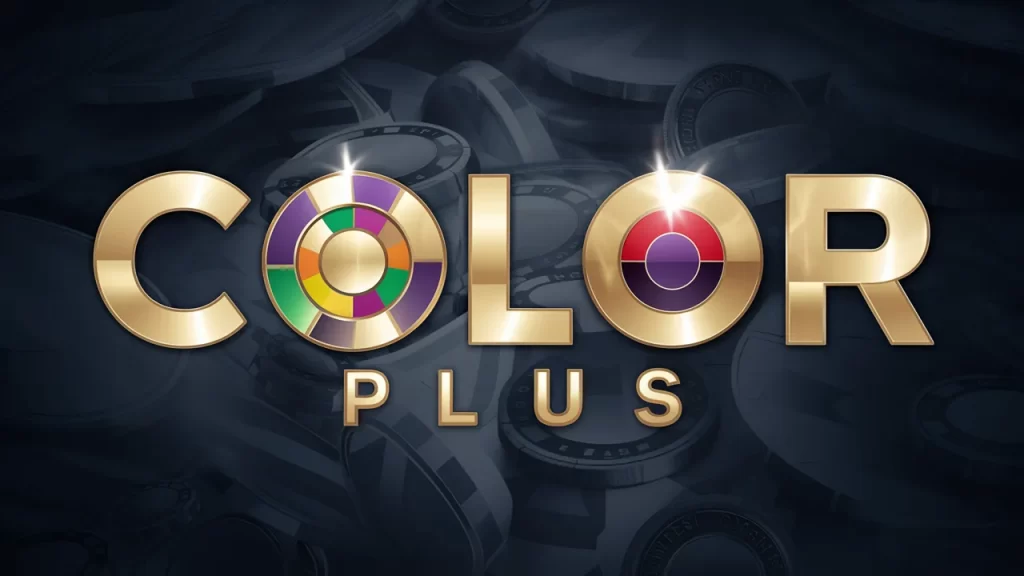
App Rating 5/5 ⭐⭐⭐⭐⭐
Win Rate : 98%


Understanding Color Plus Withdrawal
Table of Contents
Defining Color Plus Withdrawal
Color Plus Withdrawal is a meticulous process that requires both precision and an understanding of the intricate balance between color retention and extraction. At its core, this practice involves the delicate removal of pigments or dyes from various materials, such as textiles, without compromising the material’s structural integrity. This process is not merely about reversing a coloring process; it’s about achieving a balance that preserves the original quality and appearance of the material.
The Importance of Proper Withdrawal Techniques
Employing the correct withdrawal techniques is paramount to success. The efficacy of these techniques directly impacts the quality of the outcome, influencing both the material’s longevity and its visual appeal. Inappropriate methods can lead to irreversible damage, such as fading, discoloration, or even weakening of the fabric. Therefore, understanding and applying the right techniques ensures that the withdrawal process is both effective and sustainable, safeguarding the material’s integrity.
The Science Behind Color Plus Withdrawal
Chemical Interactions in the Withdrawal Process
The science behind Color Plus Withdrawal is rooted in chemistry. It involves a series of chemical interactions where solvents, often in conjunction with other agents, act upon the dye molecules embedded in the fibers. The solvent’s polarity, the temperature, and the duration of exposure all play critical roles in determining how the color is extracted. Understanding these interactions is crucial, as they dictate the efficacy of the withdrawal and the preservation of the material’s original properties.
How Color Integrity is Maintained During Withdrawal
Maintaining color integrity during withdrawal is a sophisticated balancing act. It requires careful control over the concentration of the withdrawal agents, the temperature of the process, and the time allowed for the chemical reaction. Overexposure can lead to a complete loss of color, while underexposure may result in unevenness. Advanced techniques involve the use of stabilizers and conditioners that protect the material, ensuring that the withdrawal process does not strip away essential qualities, such as brightness and texture.
Key Preparations Before Initiating Withdrawal
Necessary Tools and Materials for Effective Withdrawal
Preparation is the cornerstone of successful Color Plus Withdrawal. Essential tools include high-precision pH meters, which help in maintaining the ideal acidic or alkaline environment needed for the withdrawal process. Additionally, specialized solvents, protective gloves, and calibrated timing devices are crucial for controlling the withdrawal environment. The quality of the materials used in the preparation phase directly influences the final result, making it imperative to invest in the best possible equipment and substances.
Assessing Color Stability Prior to Withdrawal
Before initiating withdrawal, it is vital to assess the color stability of the material. This involves testing the material in a controlled environment to determine how it reacts to the withdrawal agents. Factors such as the type of dye used, the age of the material, and previous treatments all play a role in how stable the color will be during the withdrawal process. By conducting thorough assessments, you can predict potential challenges and adjust your approach accordingly to mitigate risks.
Step-by-Step Guide to Performing Color Plus Withdrawal
Initial Steps for a Controlled Withdrawal
The first step in a controlled Color Plus Withdrawal is to create a stable environment where variables such as temperature and pH levels can be meticulously monitored. Begin by applying the withdrawal agent uniformly, ensuring even coverage to prevent patchiness. The initial phase should be approached with caution, as the material’s reaction will set the tone for the entire process. Slow and steady progress is key here, as rushing through these early steps can lead to irreversible damage.
Monitoring Progress to Ensure Consistency
Throughout the withdrawal process, continuous monitoring is essential. This involves regular inspection of the material to check for uniformity and consistency in color removal. Tools such as spectrophotometers can be used to measure color differences and ensure that the withdrawal is proceeding as planned. Any signs of inconsistency should be addressed immediately by adjusting the exposure time or concentration of the withdrawal agents. This vigilant approach minimizes the risk of errors and ensures a flawless outcome.
Common Mistakes to Avoid
Identifying Frequent Errors in Withdrawal
One of the most common mistakes in Color Plus Withdrawal is the uneven application of the withdrawal agent, which can lead to patchy results. Another frequent error is the misuse of temperature settings, which can cause the dye to either not react or react too aggressively, leading to over-bleaching. Recognizing these errors early in the process is crucial, as it allows for timely corrections before significant damage is done.
How to Correct Mistakes and Prevent Reoccurrence
Correcting mistakes in the withdrawal process often requires a nuanced approach. If uneven color removal is detected, the material may need to be re-treated with a diluted solution to even out the results. In cases of over-bleaching, it may be necessary to reintroduce color through controlled dyeing techniques. To prevent such mistakes from reoccurring, detailed records of the process should be kept, and each step should be meticulously documented. This allows for the refinement of techniques over time.
Enhancing Withdrawal Efficiency
Techniques to Speed Up the Withdrawal Process Without Compromising Quality
Efficiency in the withdrawal process does not necessarily mean hastening the procedure at the expense of quality. Instead, it involves optimizing each step to achieve the best possible outcome in the shortest amount of time. Techniques such as pre-heating the material to the ideal temperature before applying the withdrawal agent can significantly reduce processing time. Additionally, using advanced solvents that are specifically designed to accelerate the withdrawal process without damaging the material can enhance efficiency.
Tools and Technologies That Optimize Withdrawal
The use of modern technologies can vastly improve the efficiency and quality of Color Plus Withdrawal. Automated dispensing systems, for example, ensure precise and consistent application of withdrawal agents, reducing the margin for error. High-tech monitoring devices can provide real-time data on the material’s condition, allowing for immediate adjustments. These tools not only enhance the accuracy of the process but also enable operators to work more quickly and effectively.
Expert Tips for Achieving Flawless Results
Insider Advice from Industry Professionals
Professionals in the field of Color Plus Withdrawal emphasize the importance of patience and attention to detail. According to industry experts, the key to achieving flawless results lies in the thorough preparation of both the material and the environment. Ensuring that all variables are controlled—from the pH level to the withdrawal agent concentration—can make the difference between a mediocre outcome and a masterpiece.
Proven Strategies for Perfect Withdrawal Outcomes
To consistently achieve perfect withdrawal results, professionals recommend a methodical approach. This includes pre-testing materials with small samples before full-scale application, allowing for the refinement of techniques. Additionally, using high-quality, industry-standard solvents and agents ensures that the withdrawal process is as effective as possible. Adhering to these strategies not only improves outcomes but also builds a reputation for excellence in the field.
Troubleshooting Common Issues
Diagnosing Problems During the Withdrawal Process
When problems arise during Color Plus Withdrawal, they often manifest as unexpected changes in the material’s appearance, such as uneven color or unexpected fading. Diagnosing these issues requires a keen understanding of the withdrawal process and the ability to quickly identify where things have gone wrong. Common problems include improper pH levels, incorrect solvent concentration, and insufficient monitoring.
Solutions for Common Withdrawal Challenges
Once a problem has been diagnosed, the solution often involves a combination of adjusting the withdrawal environment and reapplying the agent under controlled conditions. For instance, if color removal is uneven, a second application of the withdrawal agent at a lower concentration may be necessary to even out the results. In more severe cases, it may be necessary to halt the process and reassess the entire approach before proceeding. The key is to remain flexible and ready to adapt to the challenges that arise.
Maintaining Color Integrity Post-Withdrawal
Best Practices for Preserving Color After Withdrawal
After the withdrawal process is complete, maintaining the integrity of the color is essential. This involves careful washing and drying techniques that prevent any reactivity with residual withdrawal agents. Additionally, the material should be stored in a controlled environment where factors such as light, temperature, and humidity are carefully regulated to prevent fading or degradation over time.
How to Store and Protect Materials Post-Withdrawal
Proper storage of materials post-withdrawal is crucial for long-term preservation. Materials should be kept in dark, cool environments to prevent any interaction with light or heat that could alter the color. Protective coverings can also be used to shield the material from dust and other contaminants. Regular inspections are recommended to ensure that the material remains in optimal condition, ready for future use or display.
Future Trends in Color Plus Withdrawal
Emerging Technologies and Methods
The field of Color Plus Withdrawal is continuously evolving, with new technologies and methods emerging that promise to make the process faster, more efficient, and less damaging to materials. Innovations such as eco-friendly solvents and automated withdrawal systems are paving the way for more sustainable practices. These advancements not only improve the efficiency of the withdrawal process but also reduce its environmental impact, which is increasingly important in today’s eco-conscious world.
Predictions for the Evolution of Withdrawal Practices
As the demand for sustainable and high-quality materials continues to grow, the practices surrounding Color Plus Withdrawal are likely to evolve further. Future trends may include the development of biodegradable withdrawal agents that reduce the environmental footprint of the process. Additionally, the integration of artificial intelligence and machine learning in predicting and controlling the outcome of the withdrawal process could lead to unprecedented levels of precision and consistency. These innovations will not only enhance the quality of the results but will also set new standards for sustainability and accuracy in the industry, ensuring that Color Plus Withdrawal remains at the forefront of material processing techniques.
Related Posts
Arabella has made a significant impact in the online gaming community with her extensive collection of SEO-optimized content. Her articles, guides, and reviews are invaluable resources for gamers eager to discover new games, enhance their skills, and stay informed about the latest industry developments. Her dedication has established her as a trusted source for gaming enthusiasts.
Central to Arabella’s approach is her belief in the power of high-quality content and effective SEO to engage audiences and foster meaningful connections. By merging her passion for gaming with her SEO expertise, she provides gamers with insightful and entertaining content while helping gaming businesses effectively reach their target audience.
Leave a Reply